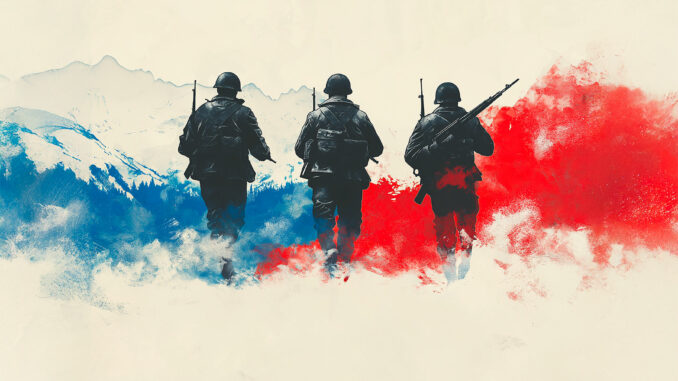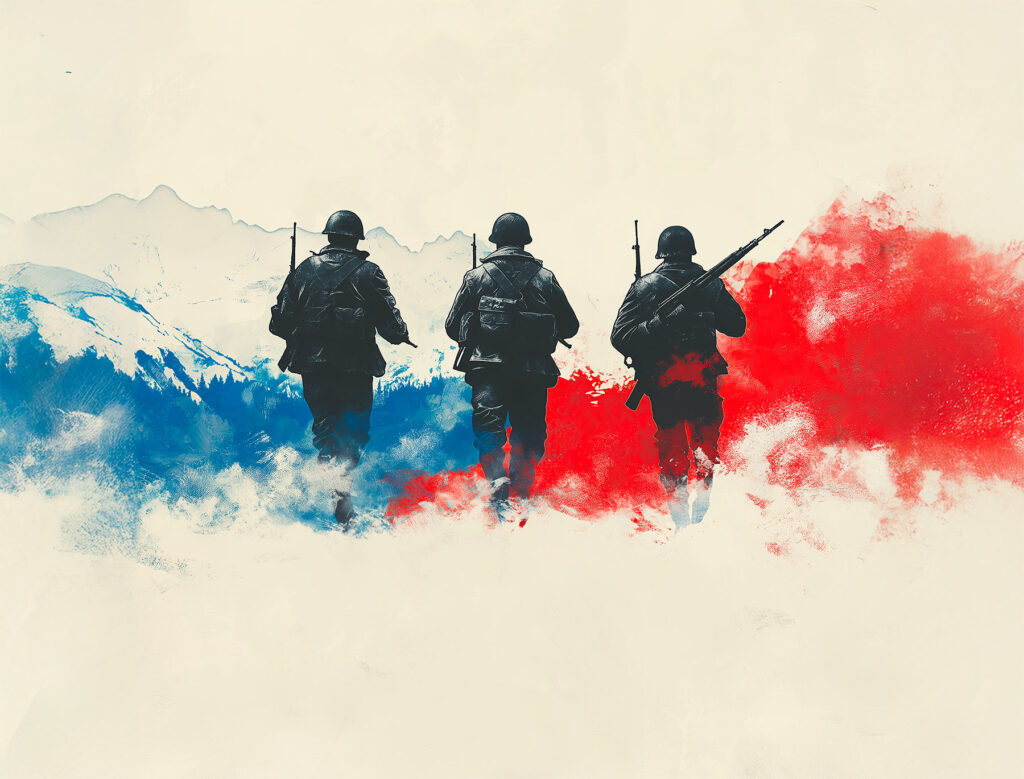
According to the Pentagon, Russian losses in Ukraine are increasing sharply, highlighting the human and material costs of Moscow’s offensive.
The conflict in Ukraine has led to a significant increase in human and material losses for Russia. The Pentagon estimates that these losses have reached critical levels, surpassing those of some previous conflicts. Despite limited territorial advances, Russian forces are paying a high price, raising questions about the military strategy employed by Moscow and its long-term implications for the Russian armed forces.
Significant human losses on the Ukrainian front
According to Pentagon estimates, Russian forces have suffered between 175,000 and 200,000 human losses in Ukraine, including soldiers killed and wounded. These figures far exceed the losses recorded during previous conflicts involving Russia, such as the war in Afghanistan (1979–1989) where approximately 15,000 Soviet soldiers lost their lives.
The intense nature of the fighting, particularly in eastern Ukraine, has led to an increase in the loss rate among Russian troops. Urban combat and the effective defensive tactics of Ukrainian forces have exacerbated this situation. The high losses also impact troop morale and could affect the long-term operational capacity of the Russian army.
Limited territorial advances despite high costs
Despite the considerable losses, Russia has made modest territorial gains in regions like the Donbass. However, these gains are minimal compared to the initial objectives of the special military operation announced by Moscow. For example, the capture of strategic towns such as Severodonetsk and Lysychansk was achieved after months of fierce fighting but did not lead to a significant breakthrough.
The Ukrainian defenses, reinforced by Western military aid, particularly in artillery systems and intelligence, have managed to slow down the Russian advance. The effective use of systems like the American HIMARS has allowed Ukraine to target Russian logistic lines, further complicating Moscow’s offensive efforts.
Impact on Russian recruitment strategy
Faced with growing losses, Russia has been forced to reconsider its military recruitment strategy. In September 2022, President Vladimir Putin announced a partial mobilization aiming to recruit about 300,000 reservists. This measure, the first since World War II, has sparked mixed reactions within the Russian population, leading to mass departures of citizens to avoid conscription.
The use of less experienced and less well-trained soldiers raises concerns about the operational effectiveness of the deployed forces. Additionally, reports indicate that paramilitary groups and prisoners have also been integrated into combat forces, which could affect discipline and cohesion on the ground.

Degradation of Russian military equipment
In addition to human losses, Russia faces significant wear and tear of its military equipment. Estimates suggest that the Russian army has lost more than 2,000 tanks and 4,000 armored vehicles since the beginning of the conflict. These losses represent a significant portion of its operational inventory, forcing Moscow to bring out older equipment like T-62 tanks, designed in the 1960s.
The destruction of ships, notably the cruiser Moskva, the flagship of the Russian Black Sea fleet, has also had a symbolic and strategic impact. The loss of this 12,490-ton vessel has reduced Russia’s ability to control maritime routes and support its coastal operations.
International support for Ukraine and Russian response
Ukraine benefits from growing international support, both militarily and humanitarian. NATO countries have provided sophisticated weapons, air defense systems, and training to Ukrainian soldiers. This support has strengthened Ukraine’s ability to resist and carry out effective counter-offensives, notably in the regions of Kharkiv and Kherson.
In response, Russia has sought to strengthen its alliances. Reports indicate that Moscow may have received combat drones from Iran and could be considering increased military cooperation with countries like North Korea. However, these potential alliances raise international concerns and could lead to new sanctions or a diplomatic escalation.
Economic and social consequences for Russia
The conflict has major economic repercussions for Russia. International sanctions have affected key sectors of the economy, reducing exports and limiting access to Western technologies. The military budget, estimated at about 65 billion euros in 2022, weighs heavily on public finances, especially with the need to replace lost equipment and fund the mobilization.
Socially, the conflict and the mobilization have generated a climate of uncertainty within the population. Departures of citizens to neighboring countries and sporadic demonstrations testify to a latent discontent. Managing these internal tensions represents an additional challenge for the Russian government.
Prospects for the evolution of the conflict
Military analysts estimate that the conflict could drag on if no diplomatic solution is found. Ukraine’s resistance capabilities, combined with logistical weaknesses and labor shortages on the Russian side, could prolong the current stalemate. The winter season adds a layer of complexity, affecting military operations and the living conditions of civilians.
The international community continues to call for de-escalation and the opening of negotiations. However, the rigid positions of both parties make it difficult to establish a constructive dialogue. The role of international mediators could be crucial in finding a peaceful outcome.
The recent data highlight a worrying increase in Russian losses in Ukraine, both human and material. This situation underscores the limits of Moscow’s military strategy and the challenges it faces. The long-term consequences for Russia could be significant, affecting not only its military capacity but also its economic and social stability. A strategic re-evaluation appears necessary to prevent further deterioration of the situation.
War Wings Daily is an independant magazine.